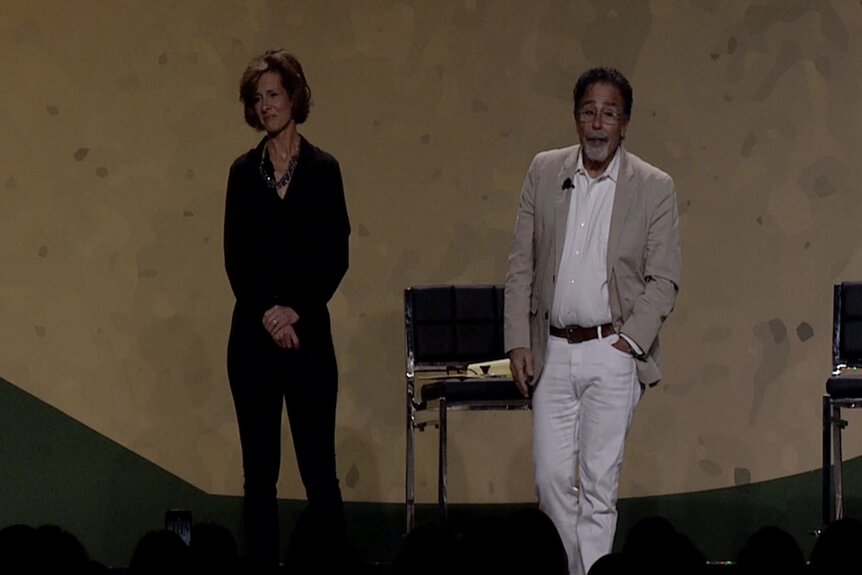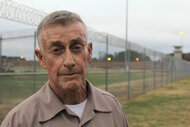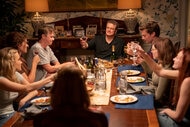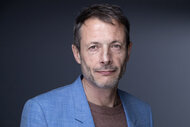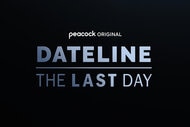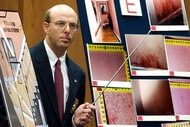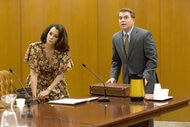Create a free profile to get unlimited access to exclusive videos, breaking news, sweepstakes, and more!
Confirmation Bias And The 'Owl Theory': Revisiting The Death Of Kathleen Peterson From 'The Staircase'
The theory of Kathleen Peterson's 2001 death, featured in the hit docuseries "The Staircase," has been laughed at and mocked by local authorities — but this may be because of confirmation bias, defense attorneys Sonia Pfeiffer and David Rudolf say.
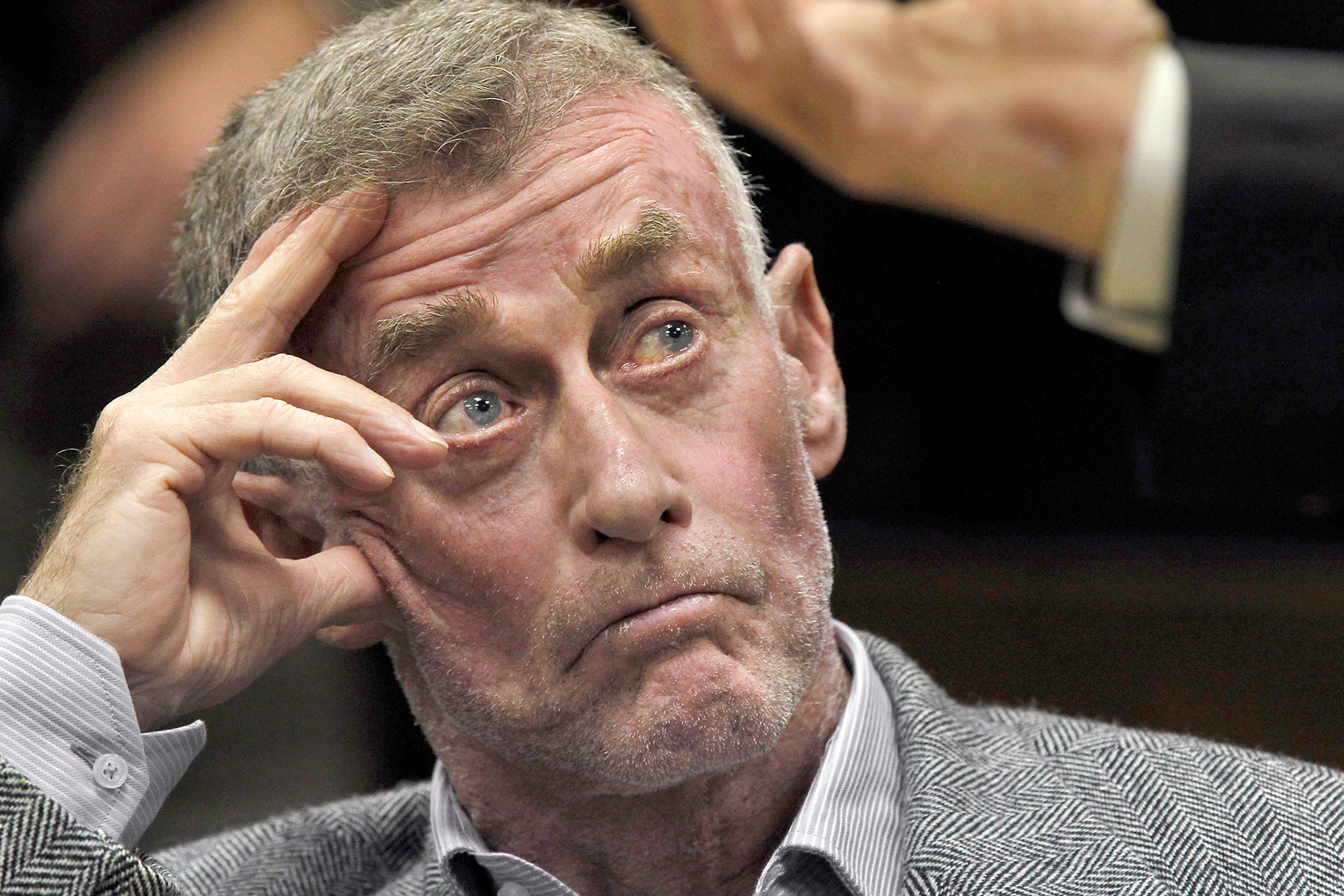
A trailer for HBO Max’s highly-anticipated dramatization of the hit Netflix series “The Staircase” was shown at CrimeCon 2022 in Las Vegas on Friday afternoon, as podcast co-hosts Sonia Pfeiffer and David Rudolf discussed how tunnel vision and cognitive bias may have played a role in the case of Kathleen Peterson’s death and further detailed the case’s controversial “owl theory.”
At the panel, titled “Wrongful Convictions: The Role of Cognitive Bias,” former TV journalist and current criminal defense attorney Sonia Pfeiffer was joined by trial attorney David Rudolf, who defended Michael Peterson after he was accused of killing his wife, Kathleen Peterson, in 2001.
From the stage, Pfeiffer concisely laid out the two concepts to the audience, explaining that tunnel vision is when a person looking at a criminal case is focusing on one single theory, or one suspect, while blocking other possibilities out and actively looking for evidence that supports the single theory. Cognitive bias, she explained, refers to how humans naturally process new information; because we are sending new information constantly, our brains need to come up with a way to process it all, so we use filters and shortcuts.
“Tunnel vision … narrows the focus of an investigation to the single target or a single theory,” Pfeiffer said from the Las Vegas stage. “Confirmation bias leads investigators and prosecutors to value evidence supporting their theory and ignore or undervalue evidence that suggests their theory might be incorrect.”
On December 9, 2001, Michael Peterson contacted authorities, saying he’d discovered his wife at the bottom of a staircase at their North Carolina home. He insisted she must have fallen down the stairs, but investigators became convinced that Kathleen Peterson had been beaten to death—likely by her husband. In October 2003, Michael Peterson was convicted of first-degree murder and sentenced to life in prison, unable to convince a jury that she had fallen down the stairs. But a lengthy appeal process raised serious questions about Peterson's conviction and, in 2017, he was released after entering an Alford plea — a guilty plea whereby a defendant does not admit to the criminal act.
Peterson’s winding story has captivated true crime fans, some of whom were treated at Friday’s panel to never-before-seen scenes that didn’t make the cut of the 16-part Netflix series. The first was used to illustrate the co-hosts’ overarching point on how confirmation bias can enter an investigation. The second was just hilarious.
In the first scene, “alleged blood spatter expert” (as Rudolf referred to him as) Duane Deaver, an employee of the State Bureau of Investigation in North Carolina, is seen using a mannequin with a sponge on its head to show how blood would splatter as Kathleen Peterson was allegedly attacked. This, the panel’s hosts say, is an example of both junk science and noble cause corruption — wherein an individual will use unethical or illegal means to attain desirable goals.
The second previously unseen clip showed Rudolph questioning a supposed Temple University physics professor and expert witness during cross-examination. Rudolph had already discovered that the witness was, in fact, a phony who periodically would present himself as an academic fit to testify at trials; the attorney had already obtained a letter from the chair of the Department of Physics at Temple University denouncing the man, who had become an annual gadfly as he faked his credentials with the Philadelphia college. As Rudolf read the letter to the court, a woman seen in the courtroom in the background has trouble containing her laughter as it all plays out.
The clip that got the biggest reaction from audiences in the Las Vegas convention center and online chat room, however, was from the forthcoming adaptation of “The Staircase,” which stars Toni Colette and Colin Firth as the Petersons. The trailer lays out the premise of the case and indicates that Colette’s Kathleen Peterson will have a large role in the limited series, which premiers on May 5.
Also seen in the trailer, pinned to a board in a courtroom, is a stuffed owl. This is a nod to the widely dismissed “owl theory” of Peterson’s death. Durham attorney T. Lawrence Pollard, who was a neighbor of the Petersons, presented the notion that, rather than having been bludgeoned by her husband or fallen down the stairs, Kathleen had been attacked by an owl outside her home. The evidence list of the crime scene showed that a microscopic owl feather was listed, as was a wood sliver from a tree limb that was also found in a clump of hair that Kathleen had in her own hand.
This theory has been laughed at and mocked by local authorities and generally not taken particularly seriously, as it seems so implausible on its face. But as Pfeiffer and Rudolph, who discussed the theory at CrimeCon in 2019, both point out, this could be another case of tunnel vision and confirmation bias hindering the discovery of the truth — this time, in a major investigation that sent a possibly innocent man away for years.
CrimeCon 2022 is produced by Red Seat Ventures and presented by Oxygen.
